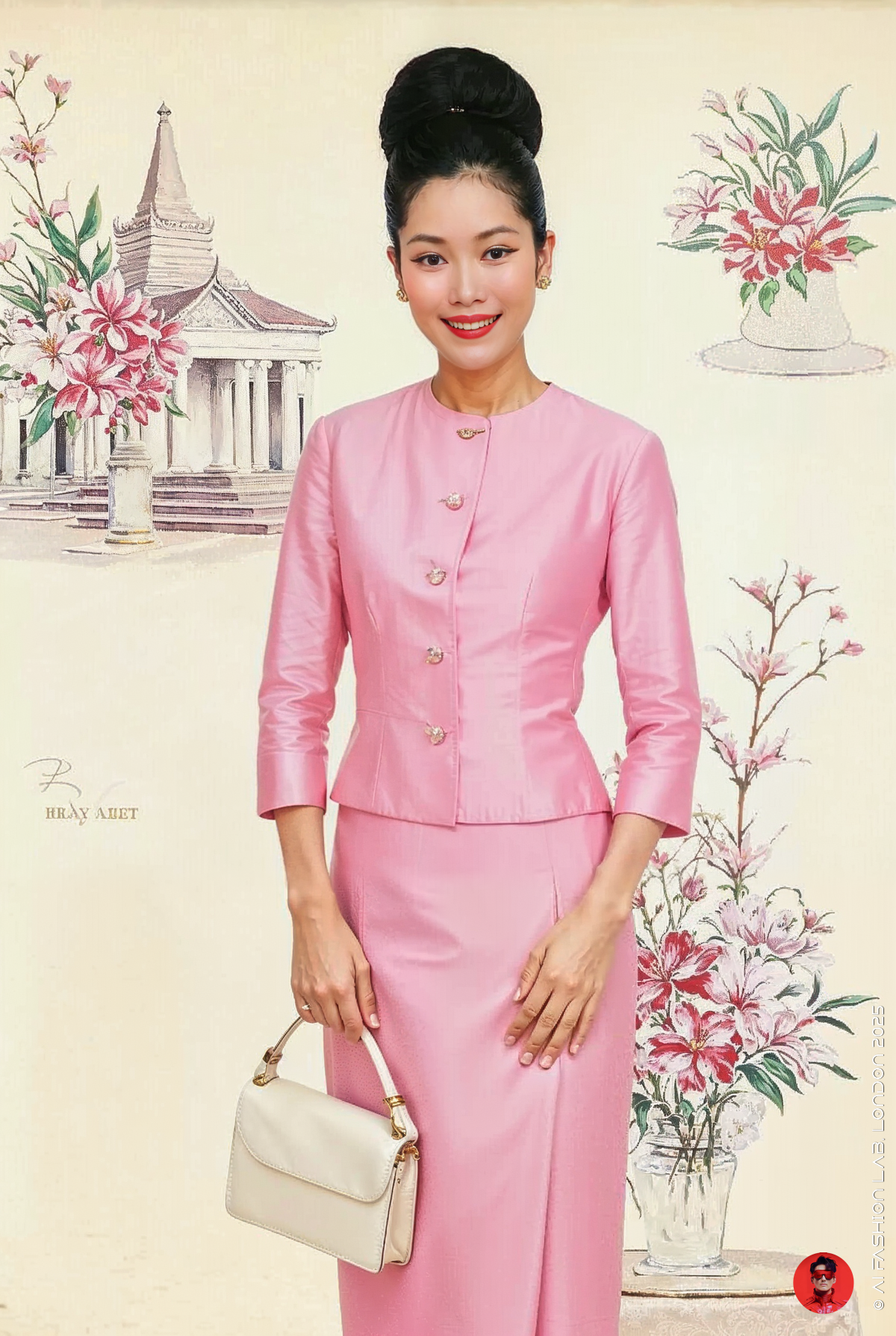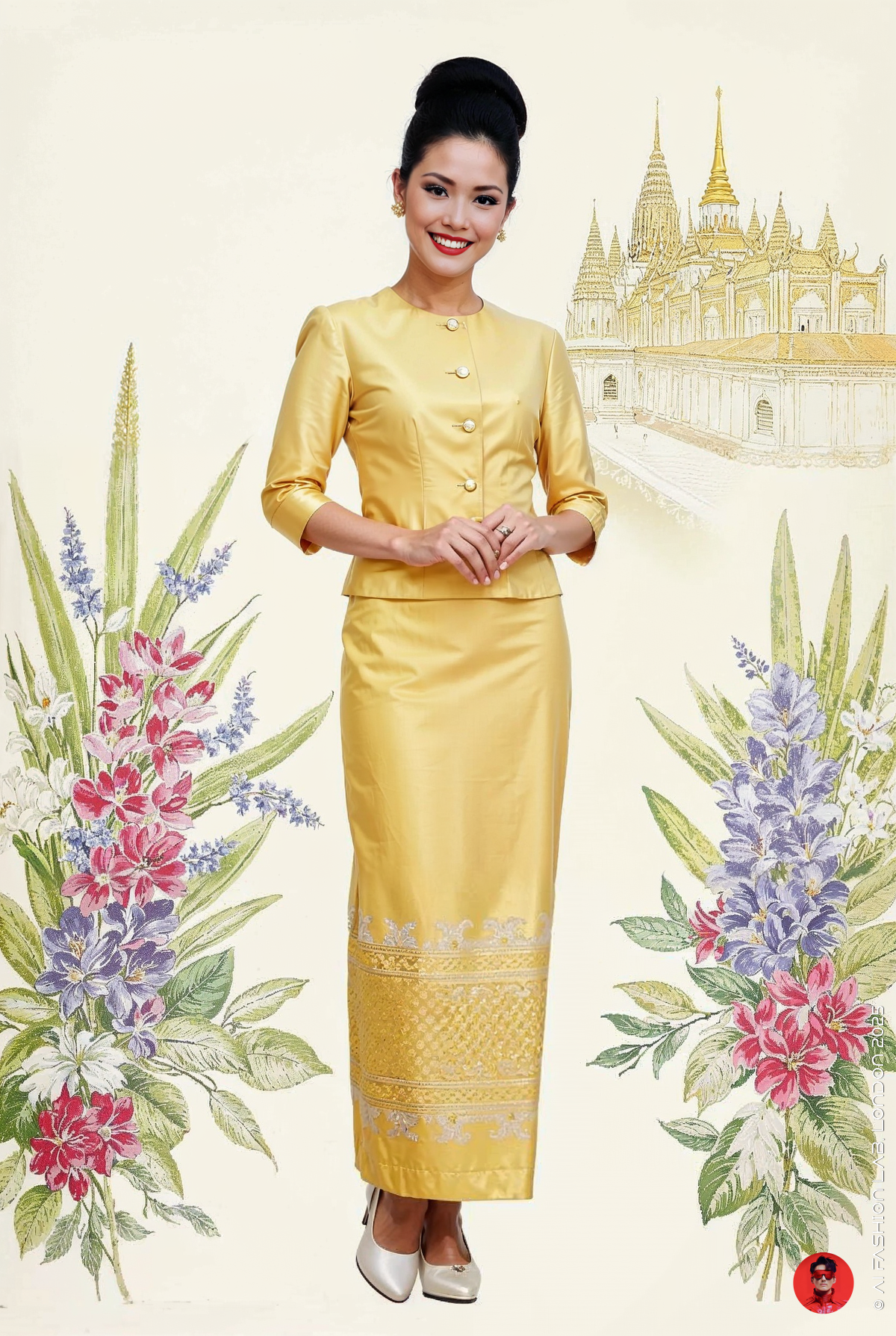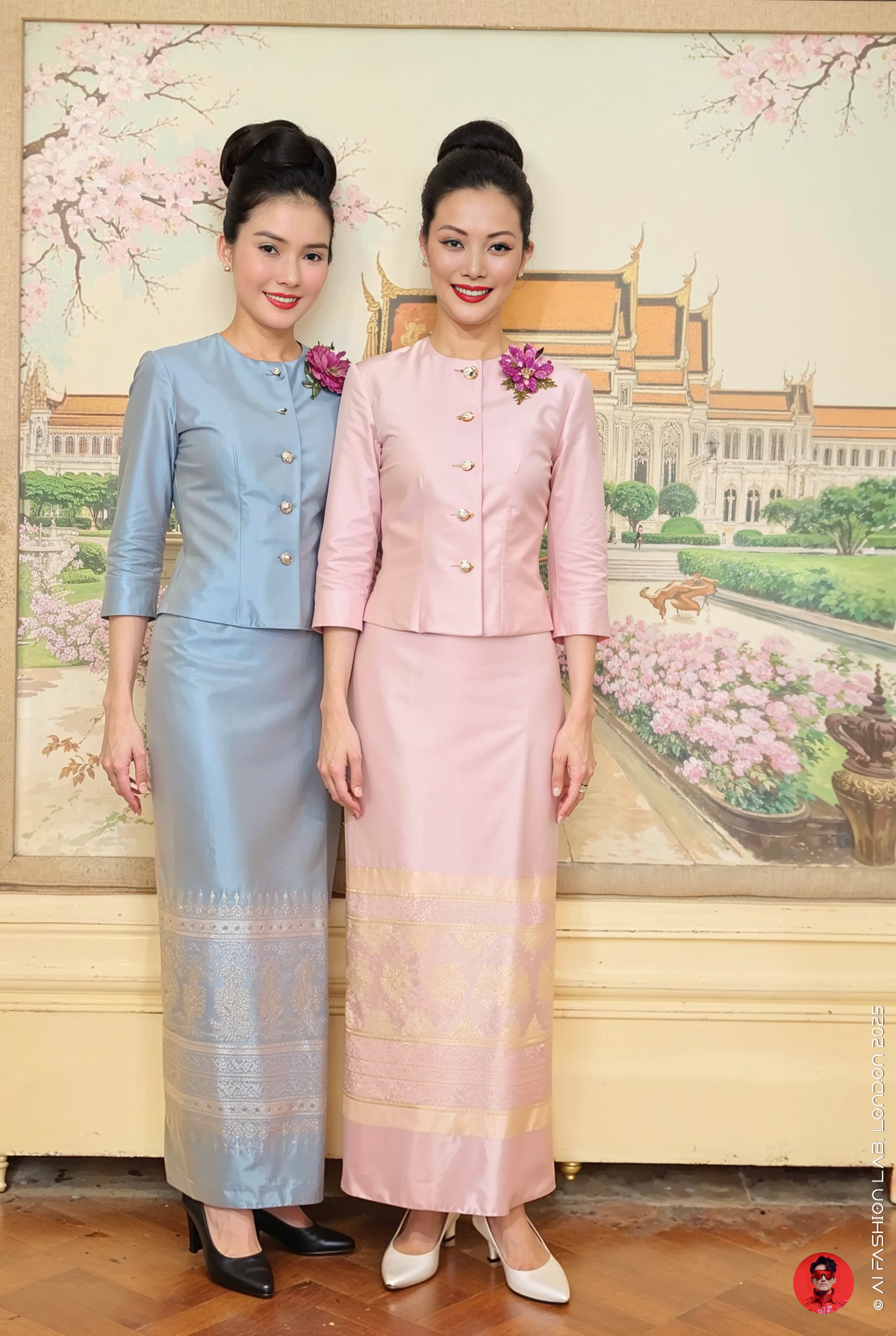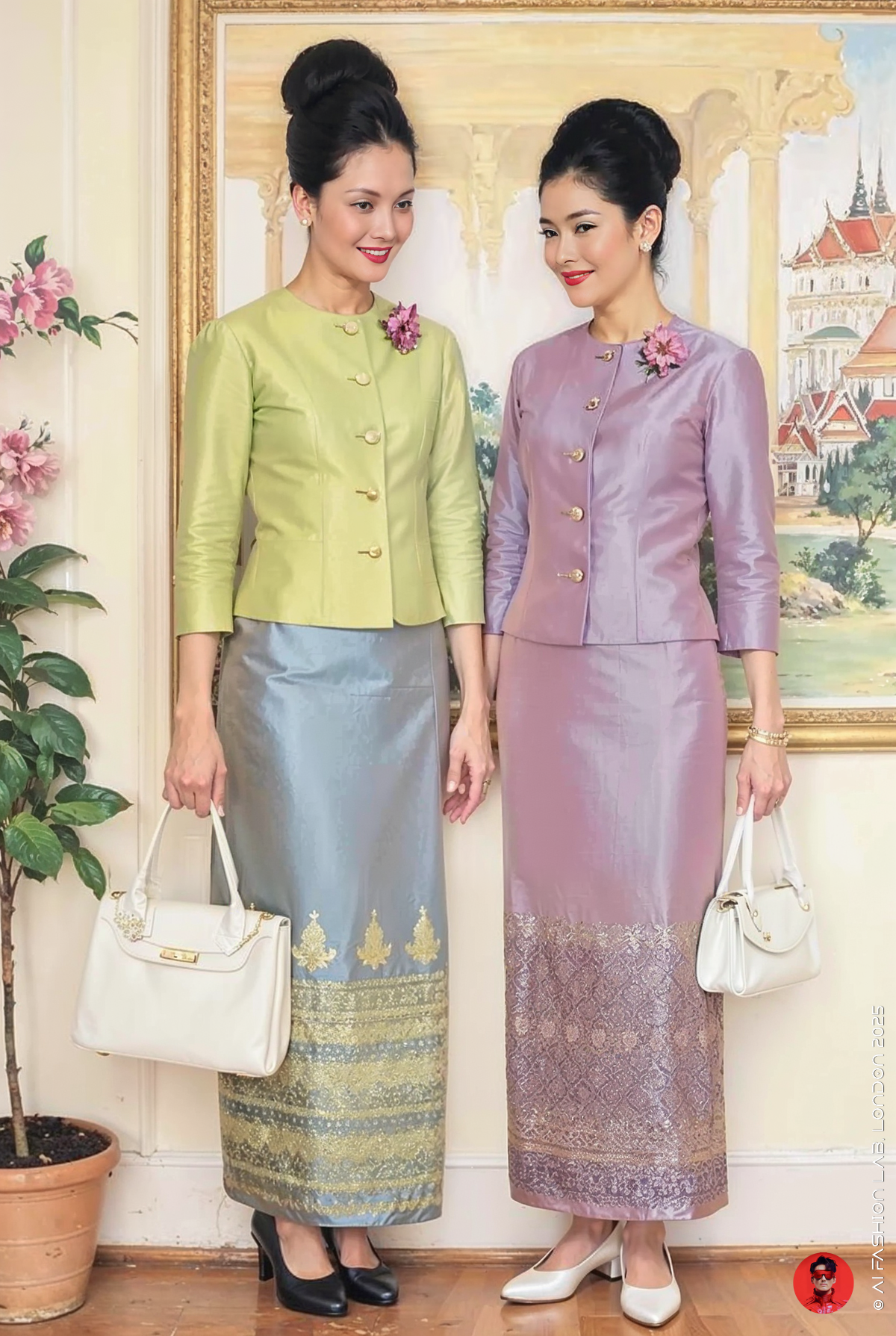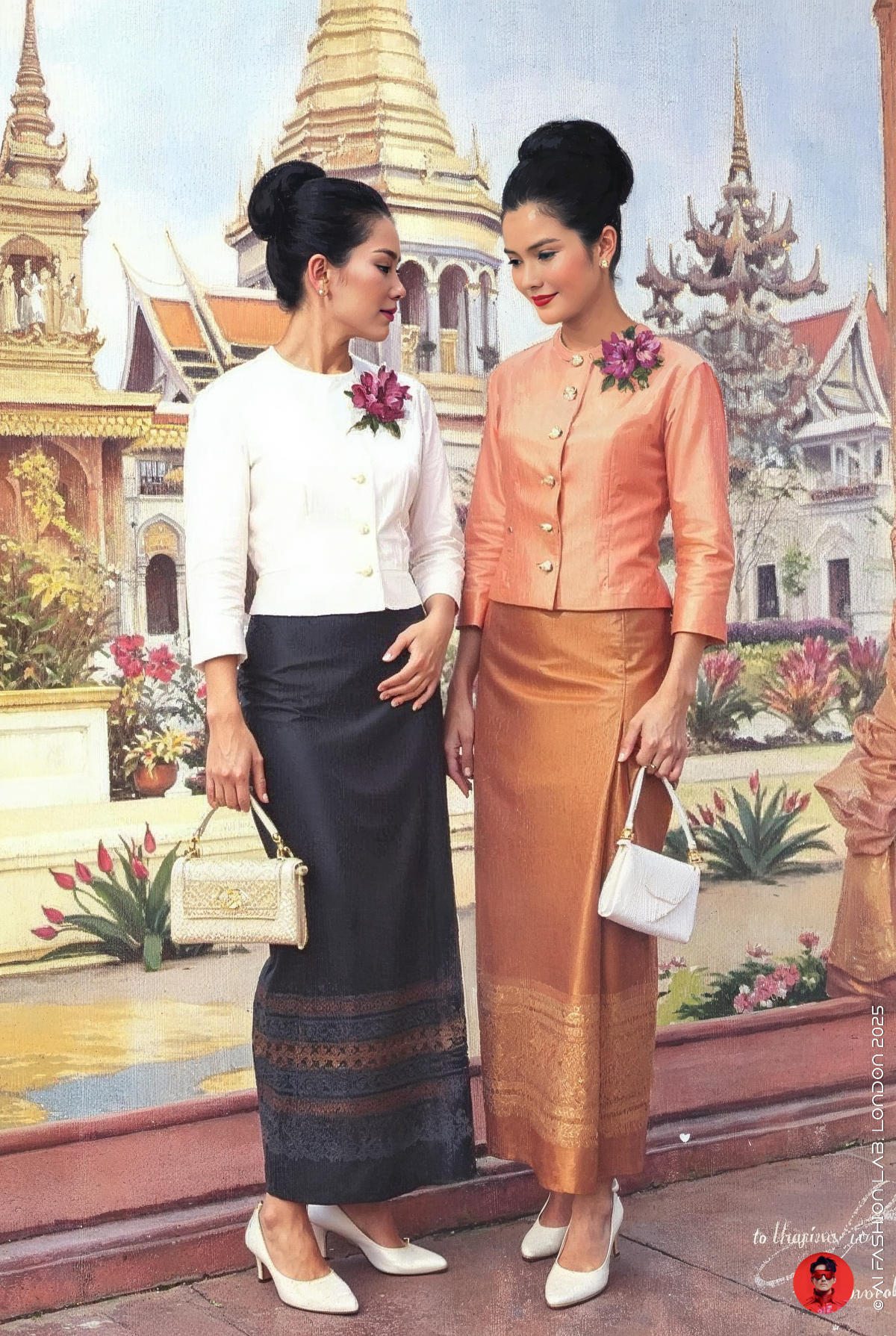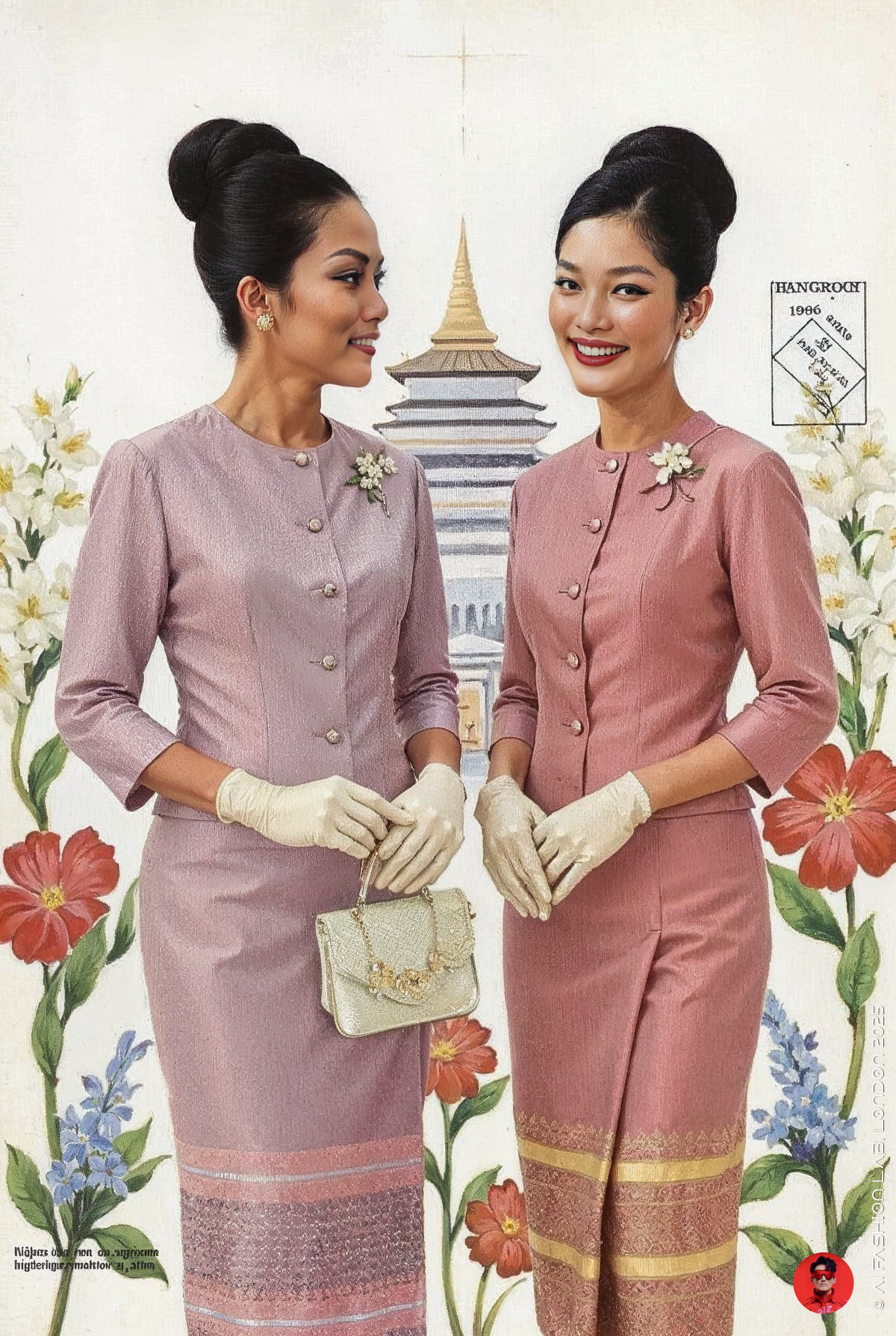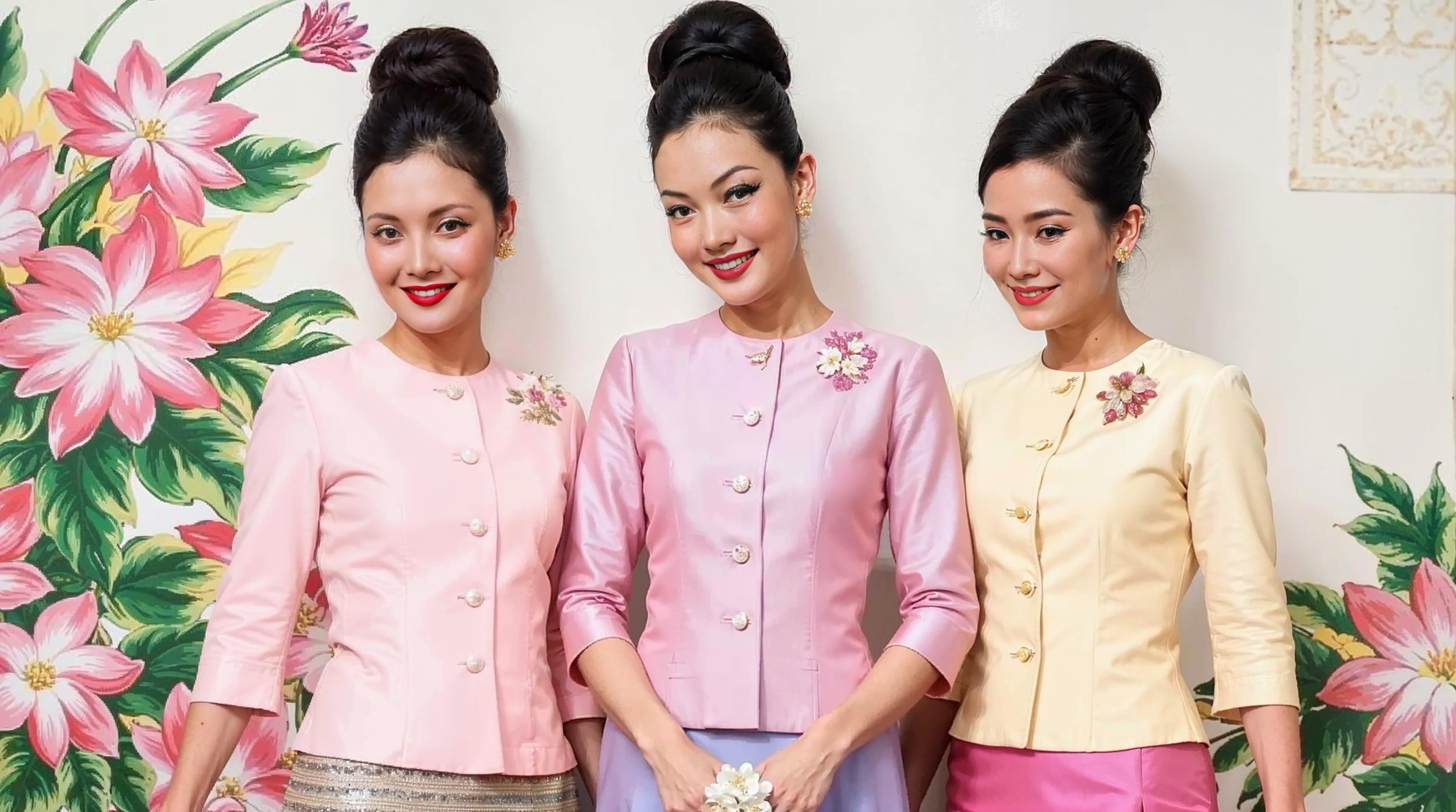ชุดไทยเรือนต้น ชุดไทยพระราชนิยม – เครื่องแต่งกายประจำชาติและความภาคภูมิใจในความเป็นไทย (๒ ใน ๘)
ชุดไทยเรือนต้น ชุดไทยพระราชนิยม – เครื่องแต่งกายประจำชาติและความภาคภูมิใจในความเป็นไทย
(ชุดแบบที่ 2 จากทั้งหมด 8 แบบในชุดไทยพระราชนิยม)
AI Collection ชุดนี้ได้รับแรงบันดาลใจจาก สมเด็จพระนางเจ้าสิริกิติ์ พระบรมราชินีนาถ พระบรมราชชนนีพันปีหลวง และ ชุดไทยพระราชนิยมทั้ง 8 แบบ ซึ่งทรงมีพระราชดำริจัดสร้างขึ้นระหว่างปี พ.ศ. 2503–2504 เพื่อให้สตรีไทยมีเครื่องแต่งกายที่สง่างาม สะท้อนเอกลักษณ์ของความเป็นไทย และเหมาะสมกับงานพิธีและโอกาสสำคัญต่าง ๆ
เพื่อเฉลิมพระเกียรติในพระราชดำริอันทรงคุณค่านี้ ผมจึงสร้างสรรค์ AI Collection ที่นำเสนอชุดไทยทั้ง 8 แบบผ่านมุมมองร่วมสมัย โดยผสมผสานกลิ่นอายแฟชั่นวินเทจแห่งยุค 1960s ซึ่งเป็นช่วงเวลาเดียวกับการกำเนิดของชุดเหล่านี้ ทั้งการจัดแสง ทรงผม และองค์ประกอบในภาพ ต่างได้รับการออกแบบอย่างประณีตเพื่อสะท้อนความงดงามของช่วงเวลาแห่งวัฒนธรรมไทยนี้อย่างสมบูรณ์
ในปีหน้า องค์การยูเนสโก (UNESCO) มีแนวโน้มจะขึ้นทะเบียน "ชุดไทยพระราชนิยม" เป็นมรดกภูมิปัญญาทางวัฒนธรรมของโลก โครงการนี้จึงมุ่งหวังที่จะเฉลิมฉลอง อนุรักษ์ และส่งต่อความภูมิใจในความเป็นไทยไปสู่คนรุ่นต่อไป
พระราชนิยมในการใช้ผ้าไทย: พระปณิธานของสมเด็จพระนางเจ้าฯ พระบรมราชินีนาถ
สมเด็จพระนางเจ้าฯ พระบรมราชินีนาถ ทรงมีพระราชนิยมในการใช้ ผ้าไทย มาตั้งแต่ยังทรงพระเยาว์ เมื่อครั้งสมเด็จพระเจ้าอยู่หัวมีพระราชดำริจะทรงประกาศหมั้น นักหนังสือพิมพ์ต่างประเทศได้ขอสัมภาษณ์พระองค์ ซึ่งพระองค์ทรงตอบอย่างชัดเจนว่า จะสนับสนุนและส่งเสริมการแต่งกายแบบไทย
ในโอกาสนั้น พระองค์ในฐานะ “พระคู่หมั้น” ทรงเลือกใช้ ผ้าไหมไทย และ ซิ่นไทย สำหรับชุดต่าง ๆ รวมถึง ฉลองพระองค์ในพระราชพิธีอภิเษกสมรส ก็ทรงใช้ผ้าไทยอย่างภาคภูมิ ภายหลังจากพระราชพิธีดังกล่าว พระองค์ทรงยึดมั่นในพระราชปณิธาน และทรงพระกรุณาโปรดให้สร้าง “เครื่องแต่งกายแบบไทยตามพระราชนิยม” ขึ้น จนกลายเป็น เครื่องแต่งกายประจำชาติของสตรีไทย มาจนถึงปัจจุบัน
ในสมัยที่เสด็จฯ เยือนประเทศเพื่อนบ้านเป็นครั้งแรก ยังไม่มีการกำหนดชุดไทยตามแบบพระราชนิยม พระองค์จึงทรงริเริ่มออกแบบฉลองพระองค์โดยใช้ ผ้าไหมไทย ผ้ายก และผ้าพื้นถิ่นไทย ต่าง ๆ มาตัดเย็บและประดิษฐ์ตกแต่ง เพื่อให้สื่อถึงอัตลักษณ์ของความเป็นไทย โดยทรงเจริญรอยตามสมเด็จพระพันปีหลวง สมเด็จพระศรีพัชรินทรา บรมราชินีนาถ
ชุดไทยพระราชนิยม
“ชุดไทยพระราชนิยม” หมายถึง ชุดแต่งกายประจำชาติของสตรีไทยที่ใช้ในงานพิธี งานมงคลสมรส และโอกาสสำคัญต่าง ๆ ชุดเหล่านี้มีลักษณะเฉพาะทางด้านรูปแบบ วัสดุ และการตกแต่ง โดยนิยมใช้ผ้าไหม ผ้าฝ้าย หรือผ้าใยประดิษฐ์ เช่น ผ้าพื้น ผ้าลายดอก ผ้าลายริ้ว ผ้ายกดิ้นเงิน ดิ้นทอง หรือผ้ายกดอกทั้งผืน พร้อมตกแต่งด้วยซิป ตะขอ หรือกระดุมที่หุ้มด้วยผ้า และอาจปักมุก เลื่อม หรือใช้ลูกปัดตกแต่งเพื่อเพิ่มความสง่างาม
ประเภทผ้าที่นิยมใช้ เช่น:
ผ้าไหม: ทอจากเส้นด้ายที่ได้จากใยไหม
ผ้าฝ้าย: ทอจากเส้นด้ายฝ้ายธรรมชาติ
ผ้าใยประดิษฐ์: ผ้าใยสังเคราะห์ เช่น โพลีเอสเตอร์ เรยอน เจอร์ซีย์ หรือโทเร
ชุดไทยพระราชนิยมทั้ง 8 แบบ ได้แก่
ชุดไทยเรือนต้น – เรียบง่าย เหมาะสำหรับงานไม่เป็นทางการหรือสวมใส่ในชีวิตประจำวัน
ชุดไทยจิตรลดา – สุภาพ เหมาะสำหรับงานพิธีการเล็กน้อยหรือรับรองแขก
ชุดไทยอมรินทร์ – งดงาม เหมาะกับงานราตรีหรืองานพิธีสำคัญ
ชุดไทยบรมพิมาน – ผ้าไหมลายสวย ใช้ในงานพิธีการและงานทางการ
ชุดไทยจักรี – หรูหรา สง่างาม เหมาะกับงานพิธีระดับสูง
ชุดไทยดุสิต – ใช้ผ้าไหมลวดลาย ปักลายวิจิตร สำหรับงานราตรีหรืองานฉลอง
ชุดไทยศิวาลัย – หรูหรา เน้นเครื่องประดับ ใช้ในงานพิธีสำคัญ
ชุดไทยจักรพรรดิ์ – สง่างามที่สุด ใช้ในงานพิธีใหญ่ระดับราชสำนัก
จุดเริ่มต้นของ AI Collection นี้: ชุดไทยเรือนต้นในโทนพาสเทลและสีน้ำ
ชุดไทยเรือนต้น ซึ่งเป็นชุดแบบที่ 2 ในชุดไทยพระราชนิยมทั้ง 8 แบบ ได้รับการตั้งชื่อตาม “พระตำหนักเรือนต้น” ในพระราชวังดุสิต ซึ่งเป็นเรือนไทยไม้สักแบบเรียบง่าย ชุดนี้ออกแบบให้เป็น ชุดลำลองของสตรีไทย สำหรับสวมใส่ในโอกาสไม่เป็นทางการ หรือในชีวิตประจำวัน โดยมีลักษณะเด่นคือ:
ใช้ ผ้าไหมหรือผ้าฝ้าย ตัดเย็บเป็น ผ้านุ่งป้าย ยาวจรดข้อเท้า ลวดลายเป็นแนวขวางหรือตามยาว
เสื้อ คอกลมตื้น แขนสามส่วน ผ่าอก มีกระดุมห้าเม็ด ใช้ผ้าสีเดียวกันหรือตัดกับซิ่น
ใช้เครื่องประดับน้อย เพื่อเน้นความสุภาพเรียบง่าย
ชุดไทยเรือนต้นสะท้อนให้เห็นถึงความงามตามแบบไทยดั้งเดิม ควบคู่กับรสนิยมแบบสากลในยุค 1960 ได้อย่างลงตัว จึงเป็นแบบชุดที่เหมาะสมอย่างยิ่งสำหรับการรังสรรค์ด้วย AI ในบริบทของ ความสง่างามแบบวินเทจสไตล์ไทย
Chut Thai Ruean-Ton – The National Costume and Cultural Pride of Thailand
(The 2nd style in the series of 8 official Thai dresses)
This AI Collection was inspired by Her Majesty Queen Sirikit The Queen Mother and the eight official styles of Thai national costume for women, known as “Chut Thai Phra Ratcha Niyom” (Thai dresses of royal preference). These elegant ensembles were initiated by Her Majesty between 1960 and 1961, with the vision of providing Thai women with graceful and culturally distinctive attire suitable for various formal and ceremonial occasions.
In honour of this vision, I created an AI Collection that reinterprets these eight traditional styles by delicately blending them with vintage fashion aesthetics of the 1960s, reflecting the era in which the dresses were conceived. The composition, lighting, and hairstyles have all been designed to echo this unique cultural moment. With UNESCO expected to inscribe the “Thai National Costume” as an Intangible Cultural Heritage of Humanity next year, this project aims to celebrate, preserve, and pass on the pride of Thai identity to future generations.
The Royal Patronage of Thai Textiles
Her Majesty Queen Sirikit has cherished and promoted Thai textiles since her youth. During the royal engagement period, when King Bhumibol Adulyadej announced his intent to marry, foreign journalists sought to interview the young royal fiancée. In her responses, Her Majesty clearly expressed her intent to support and promote traditional Thai dress.
As the future Queen, she chose to wear Thai silk and traditional pha sin (tube skirt) not only in daily wear but also in the official royal wedding attire. Following the royal marriage, she remained deeply committed to her promise. It was under her royal initiative that the concept of “Chut Thai Phra Ratcha Niyom” was formally established—setting a national standard for women’s ceremonial attire that is still proudly worn today.
On her first state visits abroad, before the official costumes had been standardised, Her Majesty began designing her own gowns using local Thai textiles—mutmee silks, brocades, and regional weaves—combining traditional craftsmanship with elegant modern tailoring. She followed in the footsteps of Queen Sri Bajarindra, consort of King Chulalongkorn (Rama V), who had also been a patron of textile artistry and courtly fashion.
Chut Thai Phra Ratcha Niyom – A National Costume for Thai Women
The “Chut Thai Phra Ratcha Niyom” refers to the eight officially endorsed styles of Thai women’s costume, intended for use at weddings, ceremonies, royal functions, and formal occasions. These dresses are characterised by their distinctive cuts, luxurious fabrics, and refined embellishments.
Materials typically include:
Thai silk – handwoven from natural silk fibres
Cotton – locally produced, sometimes hand-dyed or indigo-based
Synthetic blends – such as polyester, rayon, jersey, or Tore fabric
Decorative elements – such as brocade, metallic threads, pearl embroidery, sequins, or beadwork
Closures include concealed zippers, fabric-covered buttons, or metal hooks, all carefully integrated to preserve the harmony of the design.
The eight official styles are:
Ruean-Ton – A casual and modest style, suited for informal or daily wear
Chitralada – Simple yet elegant, suitable for light ceremonial functions
Amarin – Refined and graceful, appropriate for evening occasions
Boromphiman – Featuring patterned silk, ideal for formal ceremonies
Chakkri – Luxurious and regal, worn at high-level royal functions
Dusit – Embroidered or brocaded silk, for formal or celebratory evening wear
Siwalai – Formal, often worn with fine jewellery for major state ceremonies
Chakkraphat – The most majestic of all, reserved for royal-level events
The Starting Point of This AI Collection: Chut Thai Ruean-Ton in Pastel and Watercolour Tones
The Chut Thai Ruean-Ton, the second style in the official set of eight, takes its name from Phra Tamnak Ruean-Ton, the traditional teakwood pavilion within Dusit Palace. This style was designed as a casual and informal form of Thai national costume, intended for everyday occasions or non-ceremonial settings. Its key characteristics are:
Tailored from cotton or silk, featuring a wraparound tubular skirt (pha sin) that falls to the ankles, with horizontal or vertical patterns
A modest blouse with a shallow round neckline, made from matching or contrasting fabric, often with stripe or border patterns
Three-quarter-length sleeves, front opening with five fabric-covered buttons, and minimal use of accessories or jewellery
The Ruean-Ton dress beautifully reflects both traditional Thai taste and international influences of the 1960s. Its simplicity and elegance make it an ideal subject for AI reinterpretation in a vintage-inspired context, highlighting a unique fusion of cultural identity and modern sophistication.
#aifashionlab #AI #aiartist #aiart #aifashion #aifashiondesign #aifashionstyling #aifashiondesigner #fashion #fashionhistory #historyoffashion #fashionstyling #fashionphotography #digitalfashion #digitalfashiondesign #digitalcostumedesign #digitaldesign #digitalaiart #ThaiFashionHistory #ThaiFashionAI












